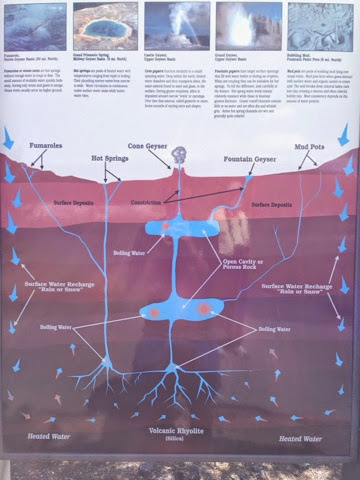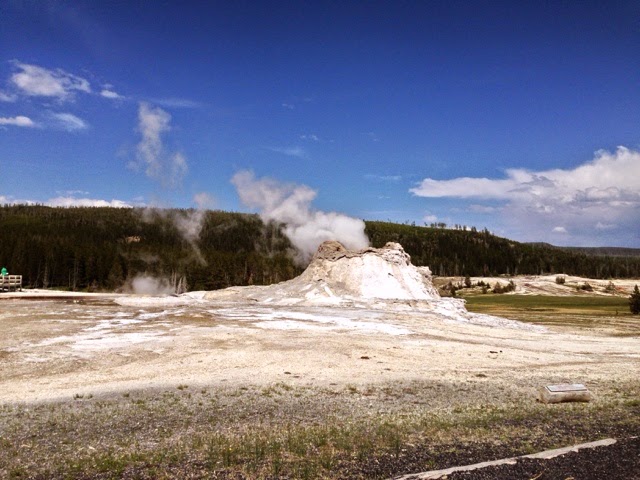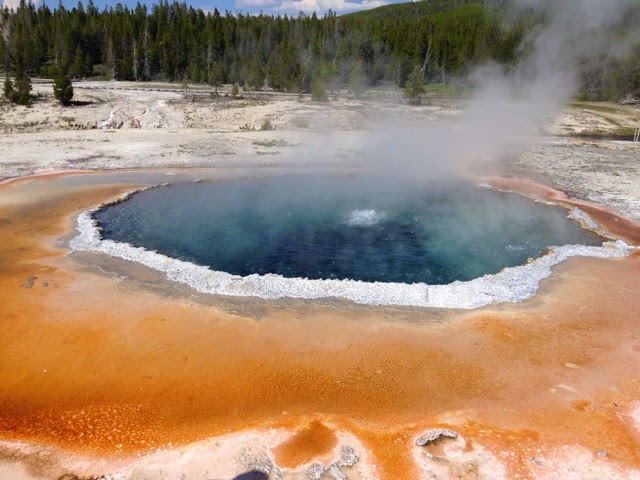Okay so if you did not know, Yellowstone is a super volcano and the whole park is on top of it, that's hot. To a degree, actually. The whole place is not steaming hot, how would we have a park there. But in some places, yes it is hot. That is because the earth's crust is thinner in Yellowstone than it usually is. Certain spots where water is heated by rocks on top of the magma chamber create hydrothermal features in Yellowstone. There are four different types of hydrothermal features in the park.
Fumaroles
Fumaroles are spots where steam is released from cracks in the ground called conduits. The temperature of fumaroles are controlled by the local water supply, and is higher in dry years and lower in wet years.
Mudpots
Mudpots occur where there is a heat source but not an extensive amount of water. There is mud, because there are microorganisms that convert hydrogen sulfide gas into sulphuric acid, which breaks rock down into clay. As gasses escape from the mud, it creates bubbles that can be up to 3 feet high.
Geysers
Geysers require four things to function: a watertight plumbing system, a heat source, a water source, and volcanic rock. The "plumbing system" is the hole into the ground, but does not go straight down, but rather has crevasses and horizontal tunnels. The system is watertight because of silica. Silica forms a rock called sinter that lines the system and prevents water from circulating, creating a great deal of pressure. The heat source is located undressed the ground in the magma chamber which then heats the rock that heats the water. Snowmelt and rainwater, penetrate the ground and percolates down through the rocks and enters the system, accounting for the water source. The rock is the park is primarily rhyolite and can withstand the extreme pressure of the geyser. So how this all works is that the water fills up in the geyser and is heated by the rock. The water is heatedly a temperature of a over 400 degrees, but is unable to boil because of the pressure. The bubbles accumulate and rise up the system where they get caught in the upper lip. The bubble pop after a while and causes some of the water to exit the system. This cause the pressure to change and the water flashes to water vapor and empties out the whole system.
Hot Springs
A hot spring is a thermal spring where water is heated by hot rocks. The thing that separates hot springs from geysers is that hot springs lack the plumbing system that geysers have. For a spring to be considered a hot spring is that it needs to have a temperature of 98.6 degrees or higher.
That's basically my research in a nutshell, I hope it wasn't too boring.



No comments:
Post a Comment